 |
King of Chemicals Manufacturers |
Specifications, Properties, Uses, SDS of Lauric Acid or Dodecanoic Acid USP NF FCC Food Grade Manufacturer Supplier Exporter Wholesale & Small Packs, CAS Number yyy. |
|
| King of Chemicals has several associated companies having accreditations like cGMP, GLP - FDA Approved Good Manufacturing Practice and Good Laboratory Practice of WHO standard, ISO-9001, ISO-14001, ISO/IEC 17025, ISO ISO-45000, HACCP, FSSC 220000, FSSAI, "REACH" Registered, Kosher & Halal Certified. e-CTD and DMF support can be made available if needed. We offer USP NF BP Ph Eur EP IP JP Analytical Reagent FCC Food Grade Chemicals & Nutraceuticals. | |
        |
|
Muby Chem Pvt. Ltd. is a several decades old group of companies, engaged in manufacturing, supplying, distributing, wholesale supplies of Lauric Acid or Dodecanoic Acid USP NF FCC Food Grade for actual users, including retail or small pack supplies for research and development work.
We supply fine and speciality chemicals, pharmaceutical excipients, mineral fortifiers in chemically pure, analytical reagent grade, IP BP USP Ph Eur EP JP and other pharmaceutical grade monograph including FCC Food grade chemicals and Nutraceuticals at best prices. We and/or our associated units have all the facilities to supply as per cGMP standard observing good manufacturing practice and good laboratory practice. We can assure low microbial count and also offer a test certificate for the same. We maintain warehouses across USA, India, and UAE. Our group exports to USA, Canada, Mexico, Argentina, Brazil, Chile, Korea, Malaysia, Thailand, Indonesia, Europe, and several other parts of the world. We supply in wholesale container loads to small pack of few grams. Solid products may be specified for it size and shape as desired by the buyer.
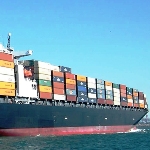
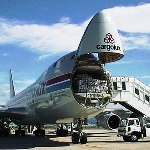
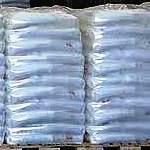
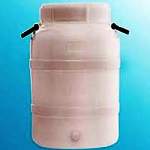
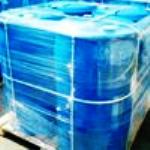
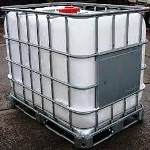
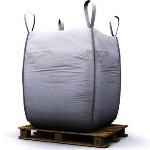
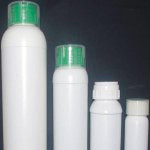
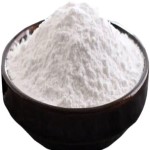
Lauric Acid or Dodecanoic Acid CAS Number
For Properties Specifications Uses of Lauric Acid or Dodecanoic Acid Click Properties, Specifications, Uses, Price, Process of Lauric Acid or Dodecanoic Acid Manufacturer.
For For SDS MSDS Sheet of Lauric Acid or Dodecanoic Acid Click SDS Safety Data Sheet MSDS Sheet of Lauric Acid or Dodecanoic Acid Manufacturer.
The Properties, Specifications, Monograph and Uses of Lauric Acid or Dodecanoic Acid:
Lauric Acid or Dodecanoic Acid is used mainly for the production of soaps and cosmetics.
Specifications of Lauric Acid USP NF Grade:
C12H24O2 --- 200.32
Dodecanoic acid;
1-Dodecanoic acid;
1-Undecanecarboxylic acid;
n-Dodecanoic acid --- CAS 143-07-7
DEFINITION
Lauric Acid contains NLT 98.0% and NMT 102.0% of dodecanoic acid (C12H24O2 ), calculated on the anhydrous basis.
IDENTIFICATION
A. Infrared Absorption
B. The retention time of the major peak of the Sample solution corresponds to that of the Standard solution, as obtained in the Assay.
ASSAY
To pass the test by chromatographic system.
Acceptance criteria: 98.0%–102.0% on the anhydrous basis
Residue on Ignition:
Sample: 10 g
Acceptance criteria: NMT 0.1%
Fats and Fixed Oils, Iodine Value: NMT 3.0
Fats and Fixed Oils, Peroxide Value: NMT 10.0
Water Determination: NMT 0.2%
Packaging and Storage: Preserve in well-closed containers. Store at room temperature.
Specifications of Lauric Acid FCC Food Grade:
Dodecanoic Acid
CH3(CH2)10COOH
C12H24O2 Formula weight: 200.32
CAS: [143-07-7]
DESCRIPTION
Lauric Acid occurs as a white or faintly yellow, somewhat glossy, crystalline solid or powder. It is obtained from coconut oil and other plant fats. It is practically insoluble in water, but is soluble in alcohol, in chloroform, and in ether.
Function: Component in the manufacture of other food grade additives; defoaming agent.
REQUIREMENTS
Acid Value: Between 252 and 287.
Iodine Value: Not more than 3.0.
Lead: Not more than 0.1 mg/kg.
Residue on Ignition: Not more than 0.1%.
Saponification Value: Between 253 and 287.
Titer (Solidification Point): Between 26° and 44°.
Unsaponifiable Matter: Not more than 0.3%.
Water: Not more than 0.2%.
The MSDS-SDS Hazard Statement of Lauric Acid or Dodecanoic Acid:
Lauric Acid or Dodecanoic Acid SDS, Safety Data Sheet
MSDS Sheet, Material Safety Data Sheet 30-March-25
1. Product Identification
Product Name & Other Names: Lauric Acid or Dodecanoic Acid.
CAS No.: 143-07-7
EINECS EC Number: 205-582-1
Relevant uses and uses advised against (if any): Industrial Manufacturing.
2. Hazards Identification
GHS, Globally Harmonized System Classification in accordance with 29 CFR 1910
Classification according to Regulation (EC) No 1272/2008
Serious eye damage/eye irritation Category 2A, H319
Labeling according to Regulation (EC) No 1272/2008
GHS Label Elements 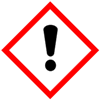 Irritant |
Signal Words: Warning
Hazard statements:
H319: Causes serious eye irritation.
Precautionary statements:
P264: Wash --- thoroughly after handling.
P280: Wear protective gloves/protective clothing/eye protection/face protection.
P302+P352: IF ON SKIN: Wash with plenty of soap and water.
P305+P351+P338: IF IN EYES: Rinse cautiously with water for several minutes. Remove contact lenses, if present and easy to do. Continue rinsing.
P332+P313: If skin irritation occurs: Get medical advice/attention.
P337+P313: If eye irritation persists: Get medical advice/ attention.
3. Composition/Information on Ingredients
Product Name & Other Names: Lauric Acid or Dodecanoic Acid.
CAS No.: 143-07-7
EINECS EC Number: 205-582-1
4. First Aid Measures
Always seek medical attention after first aid measures are provided.
Inhalation: If inhaled, remove to fresh air. If not breathing, give artificial respiration. If breathing is difficult, give oxygen and get medical attention immediately.
Ingestion: Never give anything by mouth to an unconscious person. Get medical attention.
Skin Contact: Immediately flush skin with plenty of water for at least 15 minutes while removing contaminated clothing and shoes. Get medical attention.
Eye Contact: Immediately flush eyes with plenty of water for at least 15 minutes, lifting lower and upper eyelids occasionally. Get medical attention immediately.
5. Fire Fighting Measures
Fire: As with most organic solids, fire is possible at elevated temperatures or by contact with an ignition source.
Explosion: Fine dust dispersed in air in sufficient concentrations, and in the presence of an ignition source is a potential dust explosion hazard.
Fire Extinguishing Media: Water spray, dry chemical, alcohol foam, or carbon dioxide.
Special Information: In the event of a fire, wear full protective clothing and NIOSH-approved self-contained breathing apparatus with full face piece operated in the pressure demand or other positive pressure mode.
6. Accidental Release Measures
Personal precautions, protective equipment and emergency procedures: Avoid breathing dust/fumes/gas/mist/vapors/spray. Use individual protective equipment (waterproof boots, suitable protective clothing, safety glasses, etc).
Environmental precautions: Do not let the product enter drains, soil or water sources.
Methods and materials used for containment Cleanup procedures and Storage: Contain spill then place in suitable disposal container. Stop leak if without risk. Do not get water inside container. Do not touch spilled material. Use water spray to reduce vapors. Prevent entry into sewers, basements or confined areas; dike if needed. Eliminate all ignition sources.
7. Handling and Storage
Precautions for safe handling: Apply according to good manufacturing and industrial hygiene practices. Ensure proper ventilation. Wash thoroughly after handling. Do not drink, eat or smoke while handling. Avoid contact with skin, eyes and clothing. Minimize dust generation. Avoid breathing dust/fumes/gas/mist/vapors/spray. Keep container tightly closed. Avoid ingestion and inhalation. Use individual protective equipment (waterproof boots, suitable protective clothing, safety glasses, etc).
Conditions for safe storage, including any incompatibilities: Store in cool, dry and ventilated area away from heat sources and protected from sunlight in tightly closed original container. Keep air contact to a minimum. Do not leave the material container open. Store protected from heat, sparks and ignition sources and incompatible materials. Avoid inhalation of dust/mist/vapor. Do not store with incompatible materials like strong oxidizing & reducing agents and bases. Containers may be hazardous when empty since they retain product residues. Avoid dust formation and control ignition sources. Employ grounding, venting and explosion relief provisions in accord with accepted engineering practices in any process capable of generating dust and/or static electricity. Empty only into inert or non-flammable atmosphere.
8. Exposure Controls/Personal Protection
Airborne Exposure Limits: None established.
Ventilation System: A system of local and/or general exhaust is recommended to keep employee exposures as low as possible.
Personal Respirators (NIOSH Approved): For conditions of use where exposure to dust or mist is apparent and engineering controls are not feasible, a particulate respirator (NIOSH type N95 or better filters) may be worn.
Skin Protection: Wear impervious protective clothing, including boots, gloves, lab coat, apron or coveralls, as appropriate, to prevent skin contact.
Eye Protection: Use chemical safety goggles and/or full face shield where dusting or splashing of solutions is possible. Maintain eye wash fountain and quick-drench facilities in work area.
Other Control Measures: Maintain good housekeeping in work area. Handle in accordance with good industrial hygiene and safety practice.
9. Physical and Chemical Properties
Appearance: White powder, flakes or prills.
Odor: Slight and Characteristic.
Odor threshold: No information found.
pH: No information found.
Relative density: around 0.9
Melting Point: 44C to 46C.
Initial boiling point and boiling range: No information found.
Flash point: No information found.
Auto-ignition temperature: No information found.
Decomposition temperature: No information found.
Upper/lower flammability or explosive limits: No information found.
Vapor pressure: No information found.
Vapor density: No information found.
Evaporation rate: No information found.
Flammability (solid, gas): No information found.
Partition coefficient: n-octanol/water: No information found.
Solubility: It is practically insoluble in water, but is soluble in alcohol, in chloroform, and in ether.
Viscosity: No data found.
10. Stability and Reactivity
Stability: Stable under ordinary conditions of use and storage.
Hazardous Decomposition Products: Carbon dioxide, carbon monoxide and fumes may form when heated to decomposition.
Hazardous Polymerization: Will not occur.
Incompatibilities: Strong oxidizing & reducing agents and bases.
Conditions to Avoid: Direct sunlight. Extremely high temperatures, Heat, dusting and incompatibles.
11. Toxicological Information
LD50 Rat: > 5,000 mg/kg.
Carcinogenicity: Not know to be or anticipated to be a carcinogen by IARC, ACGIH, NTP & OSHA.
Mutagenic Effects: No information found.
Developmental Toxicity: No information found.
Reproductive Effects: No information found.
12. Ecological Information
Toxicity:
Toxicity to fish: LC50 Danio rerio (zebra fish): 16 - 64 mg/l; 96 h.
Toxicity to daphnia and other aquatic invertebrates: EC50 Daphnia magna (Water flea): 16.9 mg/l; 48 h.
Persistence and Degradability: Degradable.
Mobility: No data found.
Bioaccumulation/ Accumulation: No information found.
Results of PBT and vPvB assessment: No information found.
13. Disposal Considerations
Whatever cannot be saved for recovery or recycling should be managed in an appropriate and approved waste disposal facility.
14. Transport Information
Land Transport DOT USA, TDG Canada & ADR/RID Europe: Not controlled.
Air Transport IATA/ICAO: Not controlled.
Sea Transport IMDG/IMO: Not controlled.
15. Regulatory Information
USA:
SARA 311/312 Hazards: Acute health hazard. Irritant.
California Prop. 65 Components: Not listed.
Section 16 - Additional Information
DISCLAIMER: The information and recommendations set forth herein are presented in good faith and believed correct as of the date hereof. It is compiled from various sources, and it is not necessarily all inclusive nor fully adequate in every circumstance. In addition, these suggestions should not be confused with nor followed in violation of applicable laws, regulations, rules, or insurance requirements applicable. This SDS MSDS sheet is intended only as a guide to the appropriate precautionary handling of the material by a professionally trained person using this product. Individuals receiving the information must exercise their independent judgment in determining its appropriateness for a particular purpose. This shall not constitute a guarantee for any specific product features and shall not establish a legally valid contractual relationship. In no case shall our company be liable to loss or damages by the product user.

Lauric Acid or Dodecanoic Acid Manufacturers, Suppliers, Exporters, Wholesalers:
King of Chemicals manufacturers

Plot No. 2900/46&47 + 2900/163to167, GIDC, Ankleshwar, Dist. Bharuch, India
India, USA, UAE
TEL: (Office) 91-22-23774610, 91-22-23723564
e-mail: info@kingofchemicals.com
Copyright and Usual Disclaimer is Applicable --- March 30, 2025
If I give you “My Word” Nobody can undo it.
If I sign an “Agreement” my Lawyer will undo it
Our products are for industrial and laboratory use only. The user must test the material before use. We are not dispensing chemists or druggist and do not offer over the counter type (OTC) products for medical use by individuals.
We and our associates manufacture pure chemicals surpassing Monograph Specifications of Analytical Reagent Standards, British & European Pharmacopoeia BP Ph Eur EP Standard, US Pharmacopoeia USP NF Standard, Indian Pharmacopoeia IP Standard, Japan Pharmacopoeia JP Standard, FCC Food Grade Standard. |
|
Lauric Acid or Dodecanoic Acid |
|